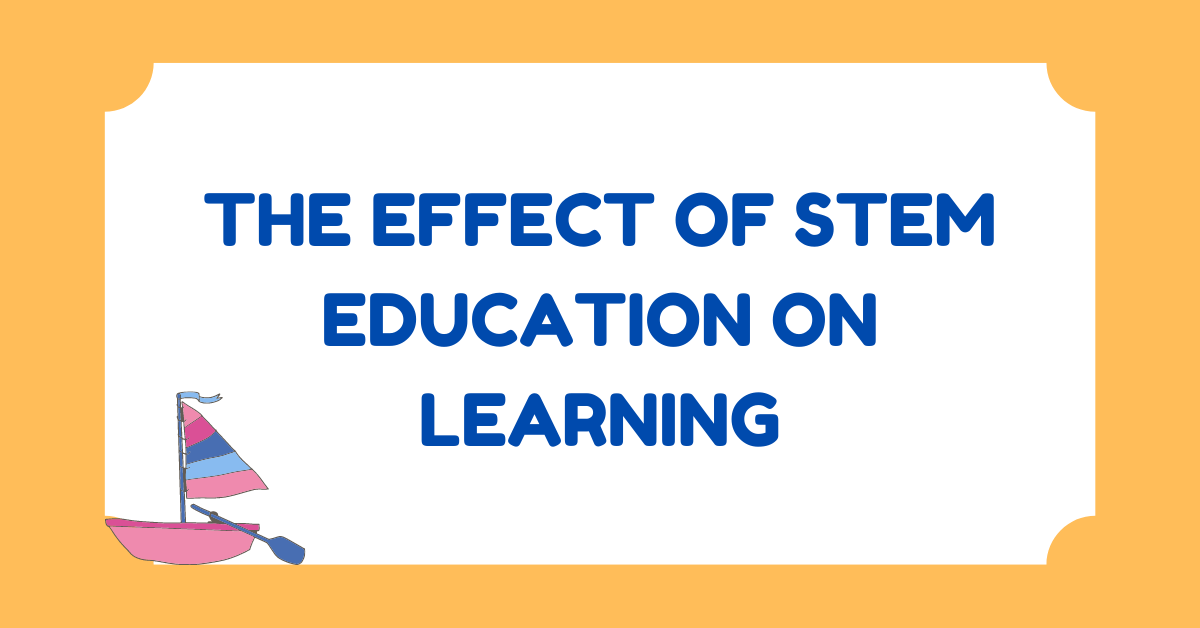STEM education is a topic of high interest in the educational domain. Everyone is talking about it and its positive effects on learning, soft skills development, and cognitive progress. We all know that the traditional teaching style is still very prevalent in our societies.
Each subject is taught separately, and students are not taught how to connect the knowledge they learn to distinct subjects. All of them are connected in one way or another, and knowing how to collaborate and apply interdisciplinary knowledge leads to success.
So, what is the effect of STEM education on learning? Let's delve deeper into the meaning of STEM and how it works.
Table of Contents
What Is STEM Education?
More and more people start talking about STEM education, a modern approach to teaching and learning. STEM is an acronym that stands for Science, Technology, Engineering, and Mathematics.
Its newest successor, STEAM, incorporates the Arts too, which expands the limits of STEM education. There are dissertations from EduBirdie you can read about and find out more about the benefits arts add to STEM education.
In traditional education, we can see teachers who are rigid and fail to adapt and meet the individual needs of students. At the same time, students are not taught how to apply the knowledge they learn in practical situations. Or how to connect the knowledge interdisciplinarily.
In STEM education, students are taught how to do precisely this: to collaborate and communicate so that they expand their knowledge and boost their skills even more.
In every school or college where STEM education is used as a teaching method, students grow to be creative and learn the value of cooperation and communication.
More than this, they have excellent problem-solving skills, as well as research and critical thinking. And no matter what career they will choose, these skills are crucial in every domain.
How Does STEM Education Work?
STEM education is a modern approach to learning, but how does it work? Well, it focuses on one of the main differences between traditional education and the STEM approach.
It includes practical activities in every lesson, helping students to learn how to apply the knowledge they have just learned.
At the same time, some topics might be more complex, so seeing and doing experiments helps them understand better. It comes with a lot of other positive effects, too.
Processing Science – a free essay example
As science is a core subject in STEM education, helping students process and understand scientific concepts is a must. However, this is not done through traditional educational methods.
During each lesson, they are involved in experiments that help them understand the scientific process easier. Moreover, the experiments students have to do, or the problems they have to solve are related to real life.
Through this, they learn how to apply the knowledge they learn in school in real-life situations while developing their problem-solving skills, too.
You can read more on this topic and learn how STEM education is effectively improving student achievement. Make sure that you understand every essay about STEM education and its effects, as this will help you expand your worldview, too.
Boosting Motivation and Self-Efficacy
You might wonder how students' approach boosts students’ motivation and self-efficacy. Well, this is the effect teachers who use the STEM approach have on students. Not only do students improve their skills and self-confidence, but teachers too.
As they have to use new and modern teaching approaches, they improve their skills considerably. So, their self-efficacy is boosted, which makes them trust their skills more and expect more from students.
Students are then motivated to want to meet these expectations, which in STEM education, we can be sure will not be extreme.
Putting too much pressure on students to learn can dwindle their motivation as they don't feel they won’t ever meet the expectations. However, STEM educators are taught how to communicate with students healthily and functionally.
Research papers and examples of STEM Education
Since its emergence, a lot of studies and research have been conducted on the topic of the efficiency of STEM education.
The majority of this research is published in the International Journal of STEM Education. You can delve more into the subject by reading the excellent research that was done.
You will find out more about the experiments done within classes and the projects students have to complete.
Designing a healthy menu for the food supplier, programming in calculators, and diluting bleach to learn about proportions are just a few examples that can help you understand STEM education more.
The Effect of STEM Education on Learning: 6 FAQs
STEM education, encompassing Science, Technology, Engineering, and Mathematics, is transforming how students learn. Here are 6 FAQs to explore its impact:
1. How does STEM education benefit learning?
- Encourages critical thinking and problem-solving: STEM subjects require applying knowledge to solve real-world problems, fostering critical thinking and analytical skills.
- Boosts creativity and innovation: STEM education encourages experimentation, design thinking, and finding creative solutions to challenges.
- Improves collaboration and communication: Many STEM projects involve teamwork, necessitating effective communication and collaboration skills.
- Strengthens core academic skills: STEM learning reinforces core skills like math, logic, and data analysis, applicable across various subjects.
- Increases digital literacy: Exposure to technology tools and coding helps students become comfortable in a digital world.
2. How does STEM education prepare students for the future?
- Job market skills: STEM fields are experiencing significant growth, and STEM education equips students with the skills and knowledge relevant to these in-demand careers.
- Adaptability and lifelong learning: The ability to learn new things and adapt to technological advances today is crucial in today's world. STEM education fosters these skills.
- Real-world problem-solving: STEM education equips students to tackle complex challenges in areas like sustainability, healthcare, and technological advancements.
3. Is STEM education just for students interested in science and math?
Absolutely not! STEM education is not just about becoming a scientist or engineer.
- Interdisciplinary approach: STEM integrates various disciplines, allowing students with different interests to find engaging entry points.
- Real-world applications: STEM education focuses on connecting classroom learning to real-world applications, making it relevant and relatable to diverse interests.
- Enhances critical thinking and problem-solving skills: These skills are valuable in any field of study or future career path.
4. How can parents encourage STEM learning at home?
- Explore together: Visit science museums, attend workshops, or explore nature and ask questions together.
- Make it fun and engaging: Incorporate STEM concepts into everyday activities like cooking (chemistry), building (engineering), or playing educational games.
- Provide resources: Encourage reading books and articles on science and technology or explore educational websites and apps.
- Positive reinforcement: Celebrate their curiosity, encourage exploration, and show your support for their learning journey.
5. What are some challenges of STEM education?
- Teacher training and resources: Ensuring educators have adequate training and resources for effective STEM instruction can be challenging.
- Access to technology and materials: Providing all students with equal access to technology and necessary materials for engaging in STEM activities is crucial.
- Combating stereotypes: Addressing potential gender or racial stereotypes associated with STEM fields can encourage broader student participation.
6. What's the future of STEM education?
The future of STEM education is likely to be:
- More personalized: Learning experiences tailored to individual student interests and learning styles.
- Technology-driven: Greater integration of technology tools like virtual reality and robotics for interactive learning.
- Interdisciplinary and project-based: Continued focus on multidisciplinary connections and project-based learning that fosters critical thinking and problem-solving.
Conclusion
By understanding the impact of STEM education, its benefits for student development, and ways to encourage it, we can empower future generations to be creative, innovative, and well-equipped for the challenges and opportunities of tomorrow.
RECOMMENDED POSTS
About the Author:
Daniel Segun is the Founder and CEO of SecureBlitz Cybersecurity Media, with a background in Computer Science and Digital Marketing. When not writing, he's probably busy designing graphics or developing websites.








